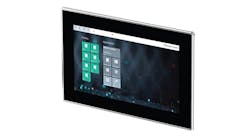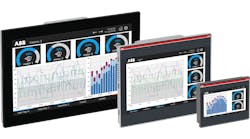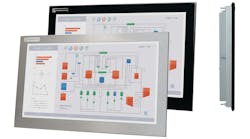Keeping operators in the know about the status of their operations is essential, and as technology has evolved so have the interfaces for doing so. Today’s human-machine interfaces (HMIs) are significantly different from their predecessors, so how do we design HMIs to ensure success? And what’s the best way to implement them and gain buy-in from operators?
This was the topic of discussion at April’s ISA Will-DuPage technical meeting at Nevins Brewing Co. in Plainfield, Ill., on April 16. In this month’s meeting, Maverick Technologies’ Lee Swindler discussed high-performance human-machine interfaces (HP-HMIs) with an overview of HP-HMIs, their advantages and how they can be implemented for maximum benefit.
HMI have evolved with technology, Swindler explained, starting as panel boards, then to a digital version that looked similar to the panel board. Eventually, these digital HMIs got cluttered with color and overly detailed graphics in the way of a virtual plant. However, today’s best practices have found that several of these previous iterations weren’t very practical in practice, Swindler said.
Instead, he noted that HMIs should:
- Allow for real-time awareness of the process,
- Allow operators to work at a detailed level when performing tasks,
- Free mental resources to control the system instead of focusing on interacting with the HMI, and
- Be consistent and easy to use.
This means, using a display hierarchy for each level of the process, having a seamless integration system and uncluttered display, as well as setting a development lifecycle.
Most notably, Swindler highlighted the benefits of a simple, grey-scale display that isn’t cluttered and has a selective use of color, which helps draw attention to real abnormal operations and highlight alarms.
When it comes to designing the displays, it’s important to get input from the operators who know the process and will be using the HMI in order to better understand their needs and the ways they use the HMI, Swindler said. Not only is this true for the visual aspects, but also in designing each level of the system.
According to Swindler, HP-HMI levels should break down as follows:
- Level 1: Continuous overview on a large-screen monitor
- Level 2: High-level display used for normal control
- Level 3: Traditional I&ID-style display used to operate all aspects of the process
- Level 4: Diagnostic level display for troubleshooting, startup and shutdown
“[Level 2] is where operators spend 90% of their time. In fact, if a plant is operating normally, they shouldn’t have to leave level 2,” Swindler said, noting that this level should be a core focus of the design process. “… From level 2, you should be able to navigate to level 3s and other level 2s.”
Finally, when migrating HMIs, change management is key, Swindler explained. If operators don’t buy in to the new system, success will be limited.
“You have to push operators outside their comfort zone,” he said. “Start with bringing in operators to explain why changes are being made.”
Additionally, a clear process for HP-HMI design is core to a successful migration. Swindler explained that Maverick Technologies starts with a storyboard workshop to gain an understanding of its client’s process and what is needed from the HMI. Once the needs and process are understood, the company moves on to developing level 2 and its graphics, and finally level 1, 3 and 4 development. With each level of development, the company corresponds with the client to review the development at that stage and make any necessary changes.
ISA Will-DuPage will host its March technical meeting May 21 at Nevins Brewing Co. from 6 p.m. to 9 p.m. Paul Gruhn of aeSolutions will present about the precursors to the Bhopal disaster, and how they’re still pervasive in minor forms throughout industry today.



